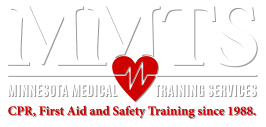We now know that performing CPR can save lives by keeping blood and oxygen flowing to the vital organs of the human body until emergency help arrives. But this wasn’t always the case.
So how exactly did we discover this important procedure? How long has it been around for?
The History of CPR
The beginnings of modern CPR can be traced back to the 1700’s, tending to drowning victims. Since a drowned victim would obviously suffer from a lack of oxygen, rescuers would provide mouth-to-mouth resuscitation to breathe oxygen back into their lungs.
In 1740, the Paris Academy of Sciences officially recommended mouth-to-mouth as a method to save drowning victims. Around the same time, a group of citizens in Amsterdam formed the Society for Recovery of Drowned Persons. The group quickly inspired similar organizations across Europe.
This, however, was just the first piece of the puzzle. In cases of cardiac arrest, chest compressions are the most important thing you can do after calling for help and tilting the victims head back. Early reports of successful chest compression wouldn’t start appearing till over a century later. While the loss of oxygen and breathing was readily apparent, the loss of blood flow and its effects were not.
Finally, in the 1950’s, James Elam and Peter Safar mapped out and published the procedure known as CPR. In addition to explaining proper technique and order of operations, they placed an emphasis on chest compressions, realizing that the air stored in the body was often enough to keep a person alive as long as there was blood flow.
While much of what they wrote out was already practiced in certain areas of the world, the official documenting of CPR would prove to be game changing.
Soon, the military would adopt these methods in the line of duty and the American Heart Association would start a program teaching the proper methods of CPR.
The rest, as they say, is history.
It’s estimated that CPR saves 92,000 lives a year. However, there are still many lives lost because someone trained in CPR isn’t around to act when cardiac arrest happens. Help grow the number of lives saved. Become trained today.
If you’re looking for CPR training in Minnesota, contact us to schedule a session or visit our calendar of classes here.

